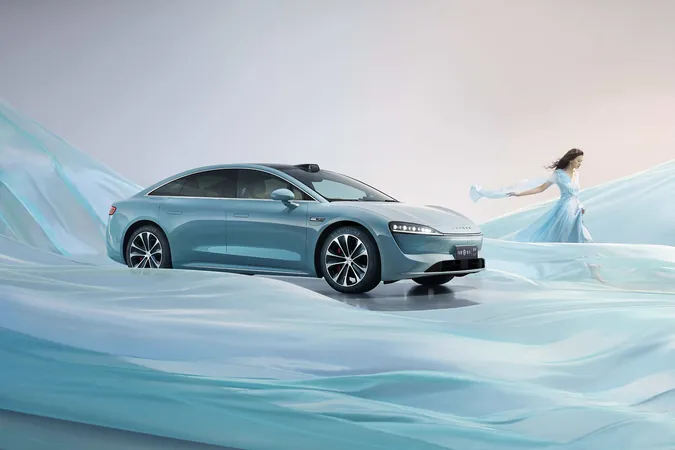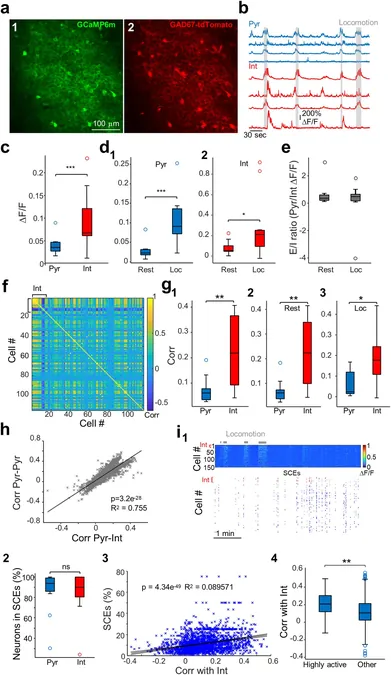
The Evolution of Selling EVs: Insights from the Redesigned Luxeed S7
2024-11-26
Author: Wei Ling
Introduction
In 2023, the automotive landscape in China witnessed a remarkable surge, with over 100 new energy vehicle (NEV) models making their debut, and more than half of these were SUVs. As domestic automakers take a bold stance against long-standing joint ventures, they are significantly increasing their market share, particularly in the competitive SUV segment, as they vie for dominance.
Shifting Focus to Sedans
However, amidst the growing competition in SUVs, manufacturers are redirecting their attention to sedans, especially in the premium electric vehicle sector where Tesla’s Model 3 has firmly established its presence. The fierce race for market leadership is evident with notable entries breathing new life into the sedan segment. Xiaomi’s SU7, for instance, amassed a staggering 80,000 preorders within a mere 24 hours after its official reveal, while Xpeng Motors celebrated the sale of 10,000 Mona 03 units in just one month. Additionally, models like the IM L6, which introduces a unique “crab walk” function, and Zeekr 001, a consistent top seller, highlight the eagerness of manufacturers to innovate.
Target Demographics
Target demographics—particularly younger generations—are significantly impacting the market dynamics, with consumers aged 25-34 representing roughly 49% of the NEV landscape in China. Within this age group, women account for 27%, showcasing a burgeoning interest from diverse customer bases. Their tech-savviness and awareness of trends are shaping the demand for premium sedans, a market that is experiencing an exciting evolution.
Huawei’s Luxeed S7 Transformation
To capture this audience, Huawei has given its Luxeed S7 a comprehensive makeover, transforming it into the first sedan powered by its innovative HarmonyOS platform.
Design Holds Power
According to a JD Power study, almost half of Chinese millennial car shoppers prioritize exterior design, a statistic that dwarfs figures from European and American markets. The launch of Xiaomi’s SU7 ignited fervent conversations online regarding its aesthetics, while Huawei’s previous model, the Luxeed R7, capitalized on its design appeal by securing 30,000 preorders within two weeks, accounting for a substantial 50% of foot traffic in Huawei retail spaces.
Significantly, women's preferences have been crucial for the Luxeed R7’s appeal, particularly with its sleek lines and exclusive phantom purple hue. The updated Luxeed S7 builds on this success, introducing four fresh color options—phantom purple, aqua green, sunny blue, and metropolitan red—while reimagining classic colors into more sophisticated, singular designs.
Among these, aqua green is especially eye-catching, featuring a unique dual-layer paint that creates a shimmering effect reminiscent of sunlight on water. Moving away from traditional automotive color trends, manufacturers are embracing softer, vibrant shades, a shift that has even seen Tesla boldly introduce vibrant reds in its upgraded Model 3.
Not only do these colors enhance the aesthetic allure of the Luxeed S7, but they also ensure that the vehicle captures attention long before potential buyers focus on technical specifications.
Smart Features: A Non-Negotiable Standard
In the modern EV marketplace, smart features have evolved from being luxuries to essentials in Chinese automotive purchases. Cars that lack advanced driving capabilities or smart cockpit features are increasingly viewed as outdated. The uptick in NEV adoption has catalyzed substantial transformations across the industry, with over 60% of buyers opting for premium models equipped with cutting-edge intelligent driving technologies.
The Luxeed S7 brings with it Huawei’s latest intelligent driving system, packed with features that assist in various driving scenarios—from simple parking to complex navigational tasks such as roundabouts and toll booths. This technology has been thoroughly tested across numerous HarmonyOS models, ensuring a level of reliability and performance that consumers now expect.
Furthermore, the new S7 is powered by HarmonyOS 4.0, backed by Huawei’s Pangu large model, which enhances user interaction via an intelligent voice assistant named Xiaoyi. This upgrade allows Xiaoyi to understand complicated commands, such as navigating to one of two airports without specifying names, relying solely on directional cues.
As automotive interiors evolve, consumers expect solutions to their everyday challenges. The Luxeed S7 rises to this occasion by offering innovative storage solutions that cater to the diverse hobbies of younger drivers. Its trunk includes cleverly designed compartments, conveniently sized for items such as sports equipment or camping gear. Future accessory options promise even greater customization, balancing functionality with aesthetic appeal.
Inside, the revamped S7 features a contemporary flat dashboard, complete with a dual-access storage compartment for easy organization. When the vehicle is parked, this dashboard can transform into a workspace or dining area, presenting a practical facet to its overall design.
Conclusion
In today’s fiercely competitive NEV market in China, manufacturers are employing every strategy available, from refined aesthetics to revolutionary technology and thoughtful design. Huawei’s enhancement of the Luxeed S7 serves as an exemplary model of this approach, showcasing a vehicle meticulously crafted to adapt to the evolving needs of its consumer base. While technological advancements lay the groundwork, genuine triumph lies in understanding and meeting the expectations of the modern buyer.
Is the Luxeed S7 the Future of EVs?
Discover how innovation meets style in this groundbreaking model!




 Brasil (PT)
Brasil (PT)
 Canada (EN)
Canada (EN)
 Chile (ES)
Chile (ES)
 España (ES)
España (ES)
 France (FR)
France (FR)
 Hong Kong (EN)
Hong Kong (EN)
 Italia (IT)
Italia (IT)
 日本 (JA)
日本 (JA)
 Magyarország (HU)
Magyarország (HU)
 Norge (NO)
Norge (NO)
 Polska (PL)
Polska (PL)
 Schweiz (DE)
Schweiz (DE)
 Singapore (EN)
Singapore (EN)
 Sverige (SV)
Sverige (SV)
 Suomi (FI)
Suomi (FI)
 Türkiye (TR)
Türkiye (TR)